Posted by Elena del Valle on January 14, 2015
By Josh Mayer
Chief Creative Officer
Peter Mayer Advertising
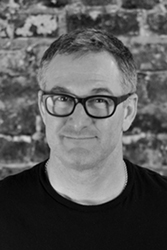
Josh Mayer, chief creative officer, Peter Mayer Advertising
Photos: courtesy Peter Mayer Advertising
When marketing agencies are working for clients, we often recommend that their messages need to be unique and stand out from the crowd – to zig while others are zagging. But it’s not so easy when our agency IS the client. What is the message we want to send? What’s our tone? How do we want to be perceived? Should we be silly, serious, zany, techy or corporate? Never is this question more relevant than when it comes time to create the dreaded holiday card.
In today’s hypersensitive, politically correct world, you certainly don’t want to offend. Or be preachy. And whether you want to admit it or not, your company’s creative reputation is on the line. So faced with a heavy dose of scrutiny and expectations – most of it admittedly our own – we decided to be as different as possible, to find the white space others weren’t playing in: New Year’s Resolutions.
Click to read the entire article Creatively breaking through holiday clutter
Posted by Elena del Valle on January 9, 2015
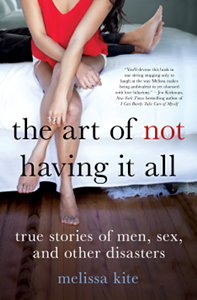
The Art of Not Having It All
Photos: St. Martin’s Press Publicity
Can a career woman find fulfillment alone? Is it possible to be single and happy? Melissa Kite thinks it is. She is single and dedicated to her work. She is convinced she is unusual for not seeking to have everything in her life. She is content with dedicating most of her energy to her career even if if it means there is no time left for the pursuit of a family. In The Art of not Having It All: True Stories of Men, Sex and Other Disasters (Thomas Dunne Books, $24.99), published this month, she discusses her life experiences and views.
In the Preface, she says she felt like “a total freak” and “…like the only woman in the world who was struggling to keep one ball in the air, and dropping that most of the time.” She prefers, she explains, focusing on doing one thing at a time rather than juggling a career and a family; and concludes that being single and lonely while not having the stereotypical everything at once such as kids, the perfect husband and a suburban home is not so bad after all.
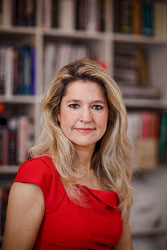
Melissa Kite, author, The Art of Not Having It All
The 278-page hardcover book is divided into ten chapters. Kite is a freelance journalist and a columnist for The Spectator in the United Kingdom.
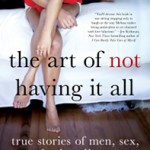
Click to buy The Art of Not Having it All
Comments:
Filed Under: Books
Posted by Elena del Valle on January 6, 2015
Information provided by Event Partner

15th Annual Horowitz Cultural Insights Forum – March 25, 2015 at the Edison Ballroom in NYC
The 15th Annual Horowitz Cultural Insights Forum is a long-standing, research- and insights-driven media industry event, well-known for advocating for the value of multicultural consumers for the media industry. The theme of the Forum this year is “Identity Matters : Be Relevant in a Multiplatform World.” Join nearly 400 executives and decision-makers from the media, advertising, technology, and financial industries as we explore how and why various aspects of identity—including race, psychographics, and culture—play an integral role in effectively targeting and engaging today’s consumers.
The agenda includes research presentations, keynote speakers, panel discussions, case studies, and a special Emerging Talent Showcase—a spotlight on young, multicultural content creators who are shaping the content of tomorrow. Register using the promo code “2015HMPR” to receive $50 off your registration fee! To inquire about speaking and sponsorship opportunities, please contact Andrew O’Brien at andrewo@horowitzresearch.com or 914-834-5999.
Posted by Elena del Valle on December 23, 2014

As the year draws to a close and a new one approaches we take the opportunity to thank you for your loyal following, your emails and Tweets, comments, ideas and suggestions, and working with us to make our content interesting and relevant. May you and yours have a joy filled holiday season and a happy, healthy and prosperous 2015!
Posted by Elena del Valle on December 10, 2014
Information provided by Event Partner

Latin Alternative Music Conference, New York City July 7-11, 2015
http://www.latinalternative.com/
The LAMC (Latin Alternative Music Conference) is the only major conference celebrating and supporting genres of Latin music that are left of center and forging the way Latinos, especially young, bicultural-millennial Latinos in the U.S., define themselves. Hailed by The New York Times as the “Sundance of Latin music”, the LAMC is also the largest Latin music conference in the US.
The 16th annual LAMC will break new ground, inaugurating a new, expanded focus on a diverse array of special events dedicated to music, food, film, books, art and poetry.
Posted by Elena del Valle on December 5, 2014
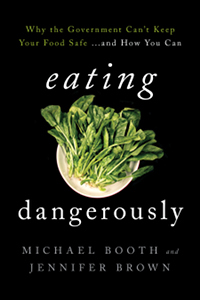
Eating Dangerously
Photo: Rowman & Littlefield
This year, an estimated 50 million Americans will get sick from food they eat, 100,000 of them will need to be hospitalized and 3,000 will die, according to Eating Dangerously Why the Government Can’t Keep Your Food Safe… and How You Can (Rowman & Littlefield, $24.95). In 2011, 33 people died of food poisoning from one instance of listeria contaminated cantaloupe alone, say the authors. What is happening to our food between the farm and the table?
In the book, Michael Booth, a former health care writer for The Denver Post, and Jennifer Brown, an investigative reporter with the same newspaper, set out to answer some of the most relevant questions regarding food safety in our country. They strive to provide an understanding of the food networks’ functionality, where it works and where it fails, and offer advice on ways to avoid food borne illnesses. The propose readers seek a balance where they become “skeptical, but cynical; aware, but not hysterical.”
The 185-page hardcover book published this year is divided into an Introduction, 10 chapters and two appendices in two main parts: Should we be afraid of our food? And How to feed your family safely and sanely. The appendices feature resources for additional information and tips on how to eat safely. It features multiple pages of end notes.
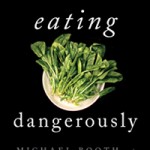
Click to buy Eating Dangerously
Comments:
Filed Under: Books
Posted by Elena del Valle on November 21, 2014
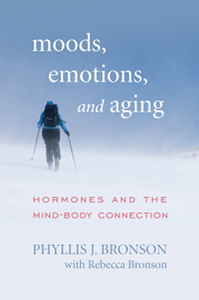
Moods, Emotions, and Aging Hormones
Photo: Rowman & Littlefield
In Moods, Emotions, and Aging Hormones and the Mind-Body Connection (Rowman & Littlefield, $29.39) Phyllis J. Bronson, Ph.D. with Rebecca Bronson, Ph.D. address the relationship between hormones and an aging woman’s moods. According to the book, she believes hormone replacement with bioidentical hormones that mimic those naturally produced in the human body and nutrients help aging women control their moods and find wellness.
She is also convinced that women need to accept themselves regardless of their age. Many of her patients, she says, describe finding joy in midlife by identifying a balance of hormones and vitamins, minerals and amino acids. She points out that despite common usage of the same words to describe natural and synthetic hormones they are different and have profoundly different effects on a woman’s body.
The 179-page hardcover book published in 2013 is easy to read and at times soulful. It is divided into an Introduction, Appendix and eight chapters: In Defense of Estrogen, The Truth About Progesterone, Mood Chemistry, The Connection Between Body Type and Hormones, Weaving the Web: How Hormones Are Central to the Female Psyche, Sexuality, Emotions and Relationships, and Diseases of Aging/Adventures in Aging.
Phyllis Bronson, who has a doctorate in biochemistry, is president of Biochemical Consulting and The Biochemical Research Foundation. Her research focuses on the biological impact of molecules on mood and emotion. She relies on her research on human identical hormones in her work with women suffering from hormone-based mood disorders. After working in the biochemistry industry for years, Rebecca Bronson dedicated herself to writing and yoga. As of the writing of the book she was teaching yoga and managing a yoga studio.
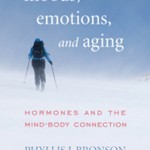
Click to buy Moods, Emotions, and Aging
Comments:
Filed Under: Books
Posted by Elena del Valle on November 10, 2014
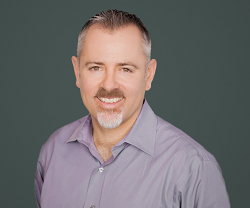
Scott Bowen, general manager, Webs
Photo: Webs
A podcast interview with Scott Bowen, general manager, Webs, is available in the Podcast Section of Hispanic Marketing & Public Relations, HispanicMPR.com. During the podcast, he discusses online marketing best practices for small businesses with Elena del Valle, host of the HispanicMPR.com podcast.
Scott is responsible for the Webs Digital Services Division of Vistaprint, dedicated to providing online marketing tools to the world’s smallest businesses including Webs, Pagemodo, Facebook page builder, and ContactMe.
Before joining Webs in 2012, he spent seven years at OpenText Corporation, an independent provider of enterprise content management software solutions. During that time, he was senior vice president, Cloud Services, and president, Digital Media Group.
To listen to the interview, scroll down until you see “Podcast” on the right hand side, then select “HMPR Scott Bowen” and click on the play button below or download the MP3 file to your iPod or MP3 player to listen on the go, in your car or at home. To download it, click on the arrow of the recording you wish to copy and save it to disk. The podcast will remain listed in the November 2014 section of the podcast archive.
Posted by Elena del Valle on November 7, 2014
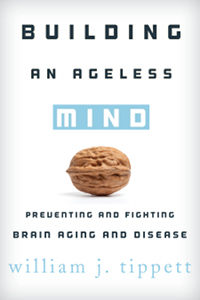
Building an Ageless Mind
Photo: Rowman & Littlefield
Just as mental stimulation is important in our youth our brain requires cognitive stimulation as we age. So says William J. Tippett, P.h.D., assistant professor, University of Northern British Columbia. He believes it is important to stimulate as much of the brain as possible to maintain that organ healthy as adults grow older. He proposes that adults nearing their aging years learn about their brain to develop a neuroprotective plan.
In Building an Ageless Mind: Preventing and Fighting Brain Aging and Disease (Rowman & Littlefield, $32.58) he addresses ways to strive for good cognitive ability as people and their brains age. The author believes achieving such brain health requires readers to be proactive and knowledgeable enough to recognize when abnormalities arise. In the book, he explores cognitive training, exercise and diet and their effect on the brain.
The 239-page hardcover book published in 2013 is divided into four main sections: Cognitive Stimulation, Aging and Disease, Healthy Living As We Age, and The Futuristic Brain. He addresses the importance of eating the right foods to nourish the brain. He points to, for example, the effects of vitamins A, C, D, and E as well as reveratrol. He also says physical activity can maintain and enhance brain function. Being an athlete is required, he says, just being physically active.
Tippett is the principal investigator, founder and director of the Brain Research Unit at the University of Northern British Columbia. He is also associate member of the Centre for Stroke Recovery at Sunnybrook Health Sciences Centre in Toronto, Canada.
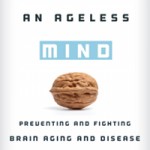
Click to buy Building an Ageless Mind
Comments:
Filed Under: Books
Posted by Elena del Valle on October 28, 2014
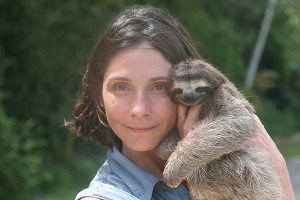
Ana Salceda poses with a sloth rescued from a hazardous road crossing in Panama
Photos: Thirteen Productions LLC
In these times of extensive development many are forced to leave their placid homes to make way for malls, residential complexes and commercial projects. Such is the case for sloths in parts of Latin America. In Panama, for example, the expansion of the Panama Canal has forced wild animals out of their habitats.
Among those affected are sloths. On November 5 between 8 p.m. and 9 p.m., Nature, a PBS series, will air for the first time A Sloth Named Velcro, a 50-minute documentary about sloths filmed in Panama, Costa Rica and Colombia. An editorial video clip without a hold harmless clause was not available for this article.

An adult sloth high in the canopy in Panama
The film is centered around Ana Salceda, a Washington D.C. area-based Spanish print and television journalist, as she returned to Central and South America to document sloth conservation efforts. Years earlier, while on assignment in Panama, she adopted a baby two-toed sloth she named Velcro. Her relationship with Velcro sparked an interest in sloths that remains alive today.
“I hope viewers see beyond sloths’ cute Mona Lisa smiles, and realize how fascinating, complex, and vulnerable they are. I hope they’re inspired by people like Tinka Plese, who is featured in the film and whose Aiunau Foundation rehabilitates displaced sloths and returns them to the wild,” she said about the documentary in promotional materials provided by the network. “And I hope my relationship with Velcro shows people how nourishing the human-animal connection can be, how it brings us closer to nature, and to ourselves.”

A mother sloth surrounds her young offspring in Panama
For many years, sloths were believed to be lazy animals who slept for most of their existence. Lately, they have become a hot topic among scientific researchers and black market pets. The film points to new studies that show the gentle creatures are not so sloth-like. To demonstrate their point Ana joins Bryson Voirin and his colleagues from the Max Planck Institute as they carry out a landmark study in the field about the sleep habits of sloths. Voirin discovered that, as opposed to their captive relatives, wild sloths sleep only about as much as humans. According to other studies, sloths are not as solitary as scientists used to think, they have social structures, and males keep harems. Surprisingly, recent research indicates sloths move like primates, only upside-down. The documentary features two-toed, three-toed and pygmy sloths.
A Sloth Named Velcro was produced by BelugaSmile Productions and Thirteen Productions LLC. Nature is a production of Thirteen Productions LLC for WNET. While PBS declined to provide budget numbers for the project, some of the funding sources were: Arnhold Family in memory of Clarisse Arnhold, Sue and Edgar Wachenheim III, Estate of Elizabeth A. Vernon, Lillian Goldman Charitable Trust, Kate W. Cassidy Foundation, Filomen M. D’Agostino Foundation, Susan Malloy and Sun Hill Foundation, Corporation for Public Broadcasting and public television stations.


























